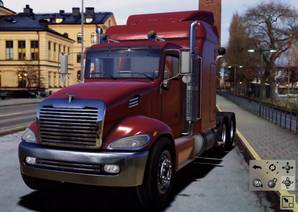Augmented Reality vs Virtual Reality:
Virtual Reality vs Augmented Reality are two terms that get compared a lot in modern manufacturing. But what do Virtual Reality (VR) and Augmented Reality (AR) mean? And what are the areas of application for VR and AR? These are just a few questions that many ask about the current state of visualization.
In this blog post, we will provide you with everything you need to know about these concepts.
Immersive experiences are becoming more and more common in modern real-time visualization. It is possible to cluster the different technologies and approaches depending on the amount of virtual/digital content that is used.
Extended Reality (XR) refers to all real and virtual world combinations. It is used as an umbrella term for AR, MR, and VR.
Virtual Reality for Manufacturers
Virtual reality is a technology that has been around for some time. It is a type of visualization that is completely digital and does not include anything directly captured from the real world. It is experienced by using special head-mounted devices (HMD or Headset) to look at the visualization.
These headsets are the true difference makers of this approach. By completely changing reality and fully diving into 360° virtual reality. Users experience the digital world as the “real” physical world. It is possible to navigate and move in that virtual environment and experience digital elements as if they were real.
Virtual Reality itself is a spectrum of different variants
The spectrum of virtual reality has simple VR experiences in a web browser (WebVR) on one end. And fully immersive experiences including more senses than just vision, like hearing, on the other.
Several vendors and technologies are available and in development, making the VR landscape a bit unclear. It has made a wide range of stationary and mobile systems in different price segments available.
Stationary systems provide higher performance and more sensors to increase immersion. But the need of connecting a power source and a computer with the headset is of course a restriction. Mobile devices are handier since the computer and the power source are integrated but are not suited for every purpose.
The focus for Virtual Reality is the consumer market and especially the gaming industry. In manufacturing, VR is mainly used in designing and engineering phases for training and education, planning, and simulation purposes. But VR is also used at trade shows and to create digital showrooms for experiencing architecture design and interiors.
Although there are some great benefits with this technology there are some downsides that are not often mentioned.
Virtual Reality is not an ad-hoc visualization. Special and relatively expensive hardware (VR headsets) are necessary. The environment in which the virtual reality is used needs to be prepared. Also, the users need experience with the technology itself to use it properly and to enjoy it.
Especially the isolation factor when using VR glasses is something to get used to and to consider when using virtual reality. In many situations it is crucial to directly communicate with others that are not part of the experience. For example through eye contact and being able to interpret reactions and emotions. But these means of communicating are lost when being in the VR.
Augmented Reality for Manufacturers
In contrast to Virtual Reality, Augmented Reality visualization is not completely digital. It extends the real world with virtual content. By adding virtual objects on top of the image captured with a camera, the real world becomes extended.
Modern smartphones and tablets have the attributes to run augmented reality applications. Therefore, the technology is much more accessible than virtual reality that always requires additional and specific hardware and training.
However, an AR visualization is limited to a smartphone or tablet screen. Therefore, the effect is not as immersive compared to wearing a full occluding VR headset.
AR can be differentiated into Marker-based and Markerless.
The first type of AR technology that was developed was so called marker-based AR. The technology uses a marker to define a spot where a virtual object will be placed. If the marker is captured by the camera, the virtual object is located at this position.
The second type of AR technology is called markerless AR and is commonly available on modern mobile devices. The technology automatically finds flat surfaces like floors or tables where virtual objects easily can be placed. Markerless AR does not require any prior preparations. So even though the camera is not focusing on a specific location, the virtual object can still remain in place.
Besides the impressive marketing aspects, operations and services like repair guidance are very common use cases for Augmented Reality. Another area where Augmented Reality can be utilized is during product presentations. Because it is so accessible and straight forward to use, broad audiences can enjoy the extra dimension that the technology brings.
Another important benefit of Augmented Reality is the fact that the virtual object can be visualized in its desired destination. Design and aesthetic questions can be answered directly, and it is also possible to verify real-life dimensions. General spacing and layout questions can be answered immediately without providing any physical and costly product examples.
Currently, AR is only reliably possible through dedicated mobile AR Apps. But a software development initiative currently under progress is WebXR. The technology enables AR right from the web browser without the need of using any specific augmented reality app. This could make AR content standard and highly accessible to people across the world.
3D content has already taken a similar path and seen a substantial increase in popularity during the past few years. The reason is that Google enabled their browser to handle real-time 3D visualization. Through this initiative, users can now upload, search for and download OBJ files directly in their Browser.
Mixed Reality for Manufacturers
Mixed Reality is the latest technology on the visualization horizon. It extends Augmented Reality so that virtual content can recognize real-world objects, and allows them to interact with one another.
For example, changing or adjusting objects in the real world will have an influence on digital objects as well. This means that moving a real object will automatically move digital objects attached to it. But also that real objects are able to overlay and occlude digital ones to increase the reality factor.
MR is enabled by using a transparent headset that overlays the virtual objects over the real world. The most prominent representative for Mixed Reality is Microsoft’s HoloLens technology. But a recent contender is the provider HTC and their VIVE Pro headset.
The advantage of mixed reality experiences is that it frees up the user’s hands. This is because only a mixed reality headset is required. This makes the technology highly attractive for training and service providers to implement.
Since it is a quite new technology, available hardware (like Microsoft HoloLens or MagicLeap) is still expensive and has irregular performance. Solving the performance, power, and Field-of-view problems will establish a higher technology standard. With the great potential this technology has, it is just a matter of time before it truly changes the service sector.’
Check out our ultimate visualization guide for a deeper understanding about how visualizations can improve your sales process. Click on the book below for your direct download:







